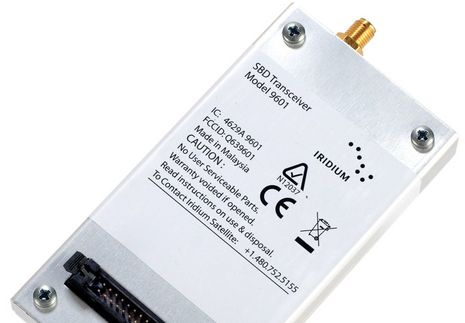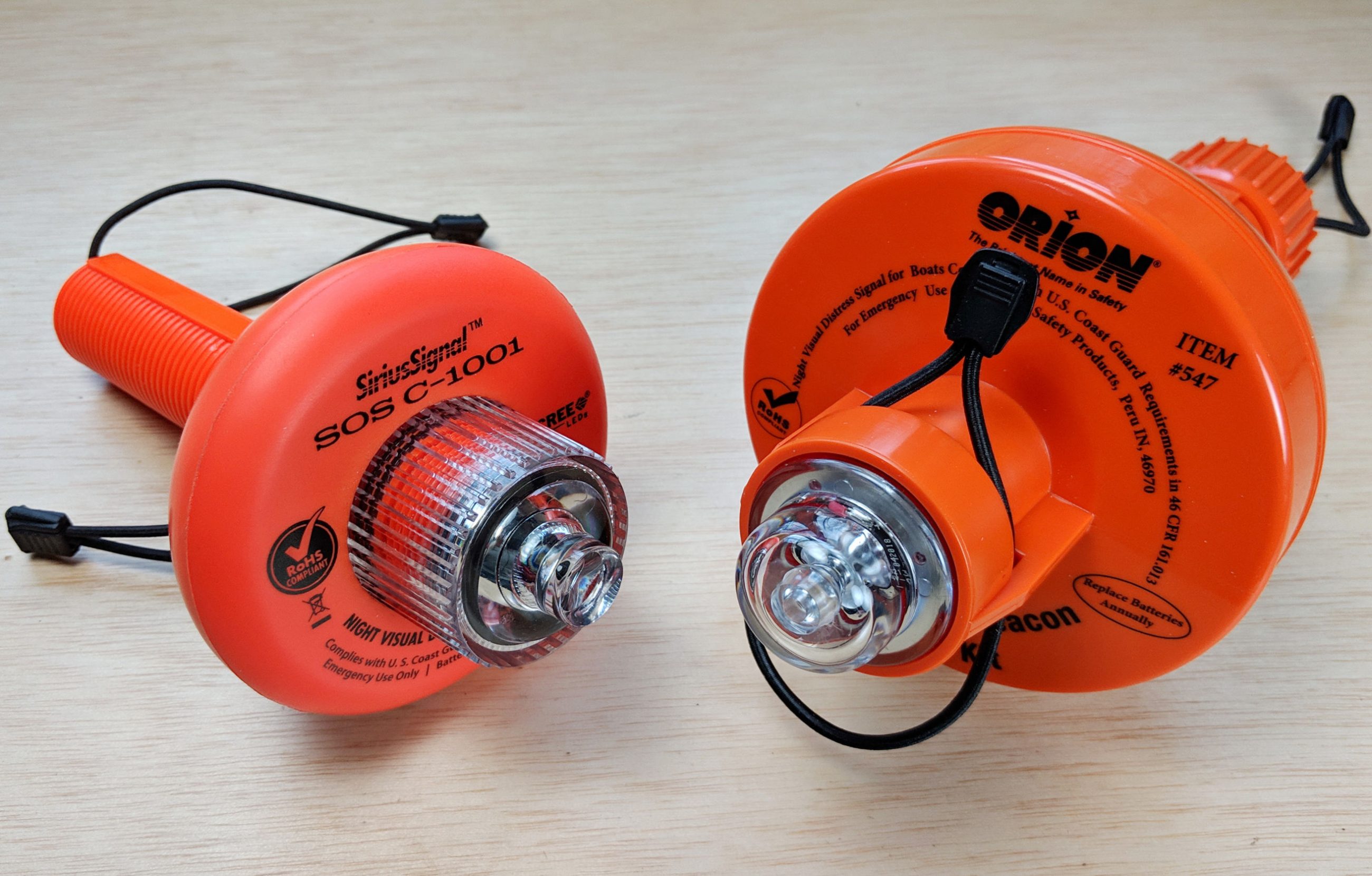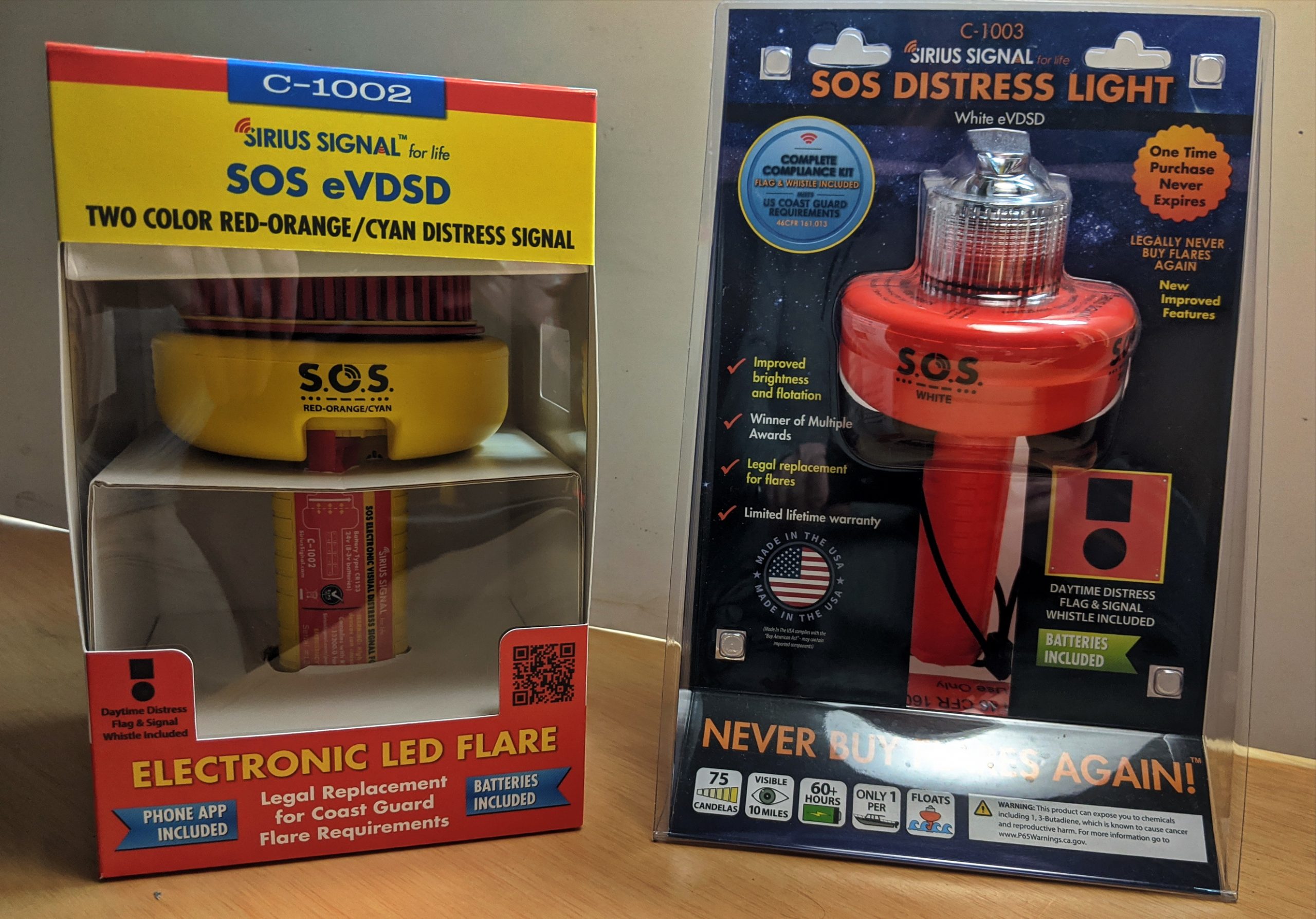Iridium SBD, interesting possibilities!
One of the most interesting meetings I had in Fort Lauderdale was with Patrick Shay, who fairly recently took the reins of Iridium’s data division (after much related experience at Motorola and Sirius, and a lot of boating). His message was clear: Iridium has realized that data is important, in fact the fastest growing part of its business, and wants to see its SBD modems “disappear into as many marine devices as possible!” Coming soon is a new version of the 9601 modem above, which will be smaller and cheaper but still able to transmit a 340 byte message from anywhere on the globe in less than 60 seconds with very high reliability. It can also quickly receive a 270 byte burst from anywhere via the Iridium ground stations, and it’s that two-way nature that suggests so many interesting possibilities…
A growing, though perhaps inflated, concern is the number of false or unnecessary distress alerts comings from one-way devices like SPOTs and PLBs. I’m going to discuss that subject here soon, but there’s no question that small, reliable two-way emergency devices would be a good thing. Even if the SAR folks were limited in their ability to query the party in distress, at least they could let the party know they’d been heard. In fact, Iridium recently founded ProTECTS, an open alliance of organizations meant “to foster the rapid and orderly adoption of portable, two-way satellite-based location, tracking and messaging technologies.” It may be noteworthy that ACR is a member.
What especially excites me are the possibilities of integrating Iridium SBD into fixed boat systems. How about a box with a distress button, also hooked via NMEA 2000 to a few sensors for tracking and security, and via WiFi to a laptop for texting and weather alerts? Maybe with all the coms functionality SkyMate manages to squeeze out of slow text, only without the latency and coverage problems? How about all that functionality built into an MFD with a touch screen keyboard, or a USB connection to a real keyboard? What can you picture being done with 340 byte bursts up, 270 down?
Unfortunately I don’t know what Iridium’s modem or SBD service will cost the value-added manufacturers they trying to attract. But I’m hopeful, and when I asked Patrick Shay if they were interested in MFD manufacturers, his response was, “Yes, absolutely; please let them know.” Done!















Trouble making comments????
Please let me know: ben dot ellison at panbo.com
Sure we all waiting for an “iridium like SPOT solution” to begin, a worldwide real solution. What for with MFD ? Weather, ports guide, alerts, video chat ? And yes tracking an rescue.
How about just a basic data service for email at an affordable rate? There a HUGE untapped market here for cruisers wanting such a thing…
I think SBD can support basic email, but it has to be assembled from 340 byte pieces by a gateway ashore, and the incoming mail has to be stripped of attachments and html, and broken into 270 byte pieces. I believe SkyMate does something similar using Orbcomm satellites.
Video chat? No way. That takes a broadband connection that looks to be difficult and expensive on boats beyond cell/WiFi range for a long time to come.
The challenge is to provide a meaningful scenario within the 340/270 limits that will overcome this very interim-esque feeling. Its going to take a lot of apparent value to get buyers off the fence who are otherwise going to wait for Gen Three. In the mean-time lets call it slim-band!
Ben, you may recall the Matys SMART9522 that you wrote about, which integrates Iridium SBD and CSD for tracking, emergency alarms, emails, voice etc.
We have a SMART9601 version which looks the same but does just the tracking and alarms and is half price. Details: http://www.matysonboard.com/products/smart9601.html
We actually developed an email program which strings SBD but it was too slow and not worthwhile.
Please use this information as you see fit.
I enjoy Panbo very much and follow it closely.
Any chance of meeting you at METS?
Interim to what Gen Three, Sandy? I’m not understanding.
Udi, Thanks for posting. I was looking for Matys in the archives to reference in this entry but was misspelling it (due to an aging mind):
https://panbo.com/archives/2008/03/matysonboard_all-in-one_offshore_comms.html
Sorry, I’m not going to METS this year.
Hello All,
The 9601 device picture above has been out for several years now and there are many tracking and emergency devices based on the technology. Our iridium based tracker (xtracker IR http://www.globalmarinenet.com/xtracker.php), for example, uses this device internally. To see this device in action in a live tracking application take a look the IAATO (International Association of Antarctic Tour Operators) tracking page which uses this device to track their member vessels. Here is a direct link.
http://track.gmn-usa.com/cgi-bin/fleet_setup.pl?fleet=iaato&password=ushuaia
The 9601 and SBD are very impressive. Typical latency times vessel to website are 20-40 seconds. So tracking applications that use Iridium SBD provide near real time updates. Compare this to orbcomm (i.e. skymate) where latency times can be measured in hours at times.
SBD pricing is such that short burst of data have a reasonable cost. Typical retail rates are about $0.05 for a 30 byte burst. Iridium also offers an economy plan that allows up to 12,000 bytes at 10 byte increments for a fixed monthly fee of about $20-25. All billing plans either have a 30 byte or 10 byte billing increment.
However, SBD gets expensive for applications that require more data. Typical retail rates for a 1 kbyte of data runs about $1.40. Applications such as e-mail and weather get expensive when using this technology.
Circuit switch data is more reasonable for data intense applications. An Iridium data circuit runs at about 15Kbytes per minute with typical rates in the $1.29 per minute range. Some providers provide something called RUDICS data which retails for much less. Our RUDICS plans run at $0.87 per minute, for example. So RUDICS pricing leads to $0.06 per Kbyte vs. SBD pricing at about $1.40 per Kbyte… The 9601 SBD mode provides only SBD messaging and does not currently support circuit switched data.
The good news is that every iridium phone is capable of both SBD and circuit switch data. This means that an iridium 9555 can be used for both SBD tracking and alarms as well as cheaper circuit switch data for data. The Matys device (mentioned above) is one such device. SBD is used for low volume data applications and circuit switch connections are used for email and weather.
There are other products on the market that take advantage of this. The new BEAM 9555 docking stations (http://www.globalmarinenet.net/iridium.php) have integrated GPS and use SBD for tracking and alarms. The USB connection on the docking stations can be used for circuit switch data at lower cost.
Currently the 9601 retails for between $500-$600. This means that inexpensive hand held devices based on this technology do not currently exist. Pricing for the new generation of smaller SBD modems has not been announced. But unless the pricing is considerably cheaper for both hardware and airtime than the current 9601 we will continue to see the technology only in high end gear.
Take care.